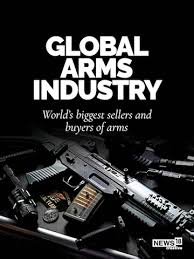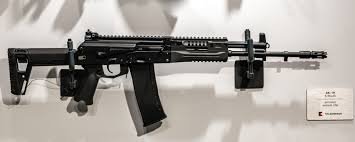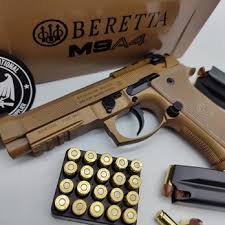Guns international refers to the intricate network surrounding firearms production, distribution, and regulation worldwide. The global firearms market is shaped by historical legacies, cultural attitudes, economic factors, and legal frameworks that vary widely from one region to another. This article explores these facets, shedding light on the significance of guns international in today’s society and economy.
Table of Contents
Historical Context of Guns International
The history of firearms is pivotal to understanding the modern guns international landscape.
- Early Innovations: The origins of firearms trace back to the 9th century in China with the invention of gunpowder. This development led to the creation of hand cannons and other primitive weapons that spread to Europe and the Middle East, fundamentally altering warfare and personal defense.
- Colonial Expansion and Arms Trade: The age of exploration saw European powers exporting firearms to their colonies. This arms trade not only influenced local power structures but also established a foundation for the guns international market, where firearms became symbols of control and influence.
- Industrial Revolution: The Industrial Revolution marked a significant turning point in firearms manufacturing. Mass production techniques enabled manufacturers to produce firearms on a larger scale, increasing accessibility and variety in the guns international market.
- Impact of the World Wars: The two World Wars catalyzed advancements in firearms technology. Post-war periods saw a surplus of military weapons entering civilian markets, dramatically reshaping the guns international landscape.
- Cold War Dynamics: The geopolitical tensions during the Cold War led to an increase in arms proliferation. Nations provided firearms to various factions, complicating the guns international scenario and contributing to ongoing conflicts.
Legal Frameworks Governing Guns International
The regulation of firearms is a crucial aspect of the guns international market, with laws differing significantly across regions.
- United States Regulations: The Second Amendment of the U.S. Constitution guarantees the right to bear arms, resulting in a unique gun culture. However, state-level regulations can vary widely, creating a complex legal landscape within the guns international framework.
- European Union Standards: In contrast, European nations generally impose stricter regulations on firearms ownership. The EU has developed comprehensive directives that member states must follow, emphasizing public safety and responsible gun ownership in the guns international market.
- Asian Regulatory Approaches: Countries such as Japan and South Korea have stringent gun control laws, resulting in very low rates of gun ownership. This cultural attitude contributes to a more limited guns international market in these regions.
- Regulatory Challenges in Developing Nations: Many developing countries face significant challenges related to gun violence and illegal arms trafficking. Governments in these regions are increasingly focused on regulating the guns international market to combat these issues effectively.
- International Treaties: Agreements like the Arms Trade Treaty (ATT) aim to establish common standards for the international trade of conventional arms, including firearms. Such treaties play a crucial role in shaping the guns international market.
Economic Aspects of Guns International

The guns international market is a significant contributor to the global economy, encompassing various sectors from manufacturing to retail.
- Manufacturing Giants: Major firearms manufacturers, including Colt, Glock, and Remington, are key players in the guns international market. These companies invest heavily in research and development to enhance product offerings and meet consumer demands.
- Global Trade Dynamics: The import and export of firearms create a complex trade network. Countries with established manufacturing capabilities often export to regions with limited production, influencing global supply and demand within the guns international context.
- Retail Landscape: Firearms are sold through diverse channels, including specialty gun shops, sporting goods retailers, and increasingly, online platforms. The growth of e-commerce has transformed the retail dynamics of the guns international market.
- Market Influences: Economic conditions can significantly affect consumer spending on firearms. Economic downturns may lead to reduced sales, while rising concerns about personal security can drive demand in the guns international market.
- Emerging Trends: Current trends in the guns international market include a growing interest in personal defense weapons, advancements in smart gun technology, and a resurgence of interest in hunting and sport shooting.
Cultural Attitudes Toward Guns Internationally
Cultural perceptions of firearms greatly influence the guns international landscape.
- American Gun Culture: In the United States, firearms are often associated with personal freedom and self-defense. This cultural perspective drives high levels of gun ownership and significantly shapes the guns international market.
- European Perspectives: Many European countries view firearms as potential threats to public safety, leading to stricter regulations and a more cautious attitude toward gun ownership within the guns international context.
- Asian Attitudes: In several Asian countries, firearms are heavily regulated, and cultural attitudes often regard them as dangerous. This results in a smaller guns international market focused on specific needs, such as hunting and sport shooting.
- Media Influence: The representation of firearms in media can shape public perceptions. Positive portrayals may enhance interest in gun ownership, while negative depictions often lead to calls for stricter regulations in the guns international sphere.
- Cultural Exchange and Shifts: Global cultural exchanges are influencing attitudes toward firearms. As perspectives evolve, the guns international market must adapt to reflect these changing societal norms.
Technological Innovations in Guns International
Technological advancements are reshaping the guns international market, impacting production, distribution, and consumer engagement.
- Innovative Manufacturing Techniques: Technologies such as 3D printing are beginning to change how firearms are produced. This innovation may lead to greater accessibility and affordability, disrupting traditional manufacturing processes in the guns international market.
- Smart Firearm Technology: Developments in smart gun technology, which includes safety features like biometric locks, aim to enhance user security and address concerns about unauthorized access. This innovation is an important aspect of the evolving guns international landscape.
- Digital Commerce: The rise of online firearms sales platforms has transformed the retail environment. Consumers now have more options and greater access to firearms, significantly influencing the guns international market.
- Safety and Compliance Innovations: As consumer demand for safer firearms grows, manufacturers are focusing on incorporating advanced safety features. These innovations address concerns and enhance the reputation of the guns international market.
- Regulatory Technologies: Technologies that facilitate tracking firearms sales and ownership help ensure compliance with regulations, contributing to a safer and more organized guns international market.
Challenges Facing Guns International
The guns international market faces numerous challenges that can impact its growth and stability.
- Illegal Arms Trafficking: The illegal trade of firearms poses significant risks to global security. Addressing this challenge requires international cooperation and robust legal frameworks to monitor and control the guns international market.
- Gun Violence Concerns: High rates of gun violence in certain regions lead to public demands for stricter regulations. This dynamic influences the perception of firearms and shapes the guns international market.
- Economic Volatility: Economic fluctuations can impact consumer behavior and spending on firearms. Businesses in the guns international market must remain adaptable to changing economic conditions.
- Regulatory Compliance: Navigating the complex landscape of firearms regulations can be challenging for manufacturers and retailers. Ensuring compliance is essential for maintaining a reputable presence in the guns international market.
- Public Perception Shifts: Changing societal attitudes toward firearms can significantly impact consumer behavior. Engaging in informed discussions about gun ownership and safety is crucial for fostering a positive environment in the guns international market.
Future Trends in Guns International

The guns international market is poised for transformation as new trends emerge.
- Sustainability Initiatives: As global awareness of environmental issues rises, the firearms industry may need to adopt sustainable practices to appeal to environmentally conscious consumers. This shift could reshape the guns international market.
- Regulatory Evolution: Ongoing debates surrounding gun control will likely lead to changes in regulations that significantly impact the guns international market.
- Demand in Emerging Markets: The demand for firearms is expected to grow in emerging markets, driven by increasing concerns about personal security and evolving cultural attitudes toward gun ownership.
- Technological Advancements: The continued integration of technology into firearms will drive innovation and reshape consumer expectations, impacting the dynamics of the guns international market.
- International Collaboration: Cooperative efforts among nations will be essential in addressing challenges such as illegal arms trafficking and gun violence, promoting a more responsible guns international market.
Also read Sway Bar Links: Everything You Need to Know
Conclusion
The guns international market is a multifaceted sector shaped by historical, cultural, legal, and technological factors. As this landscape continues to evolve, understanding the complexities surrounding firearms is crucial for stakeholders. The ongoing developments in the guns international arena underscore the need for responsible practices, informed consumer choices, and collaborative efforts to create a safer, more sustainable future for firearms globally. The interplay of these factors will shape the future of the guns international market, necessitating continuous dialogue and adaptation to emerging challenges and opportunities.


